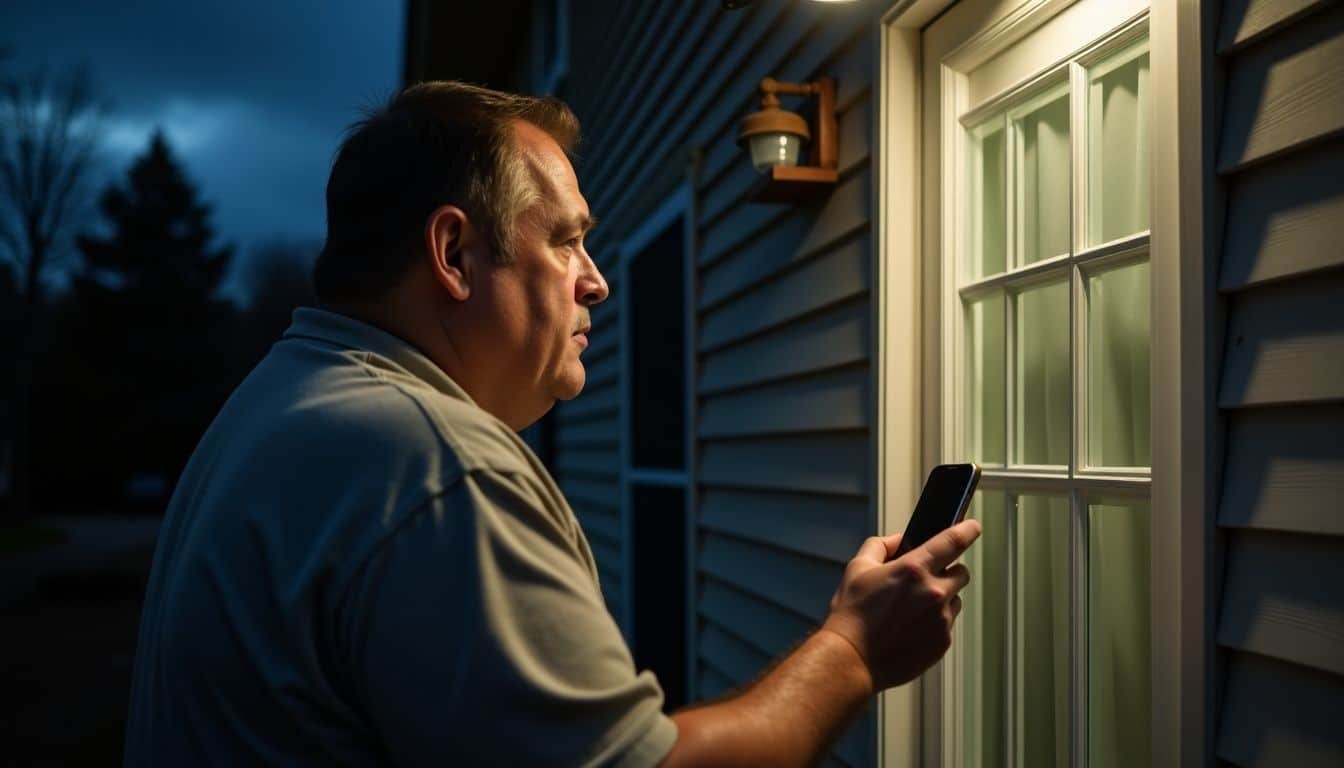Hurricanes leave behind chaos and damage, making cleanup a big chore. Floodwater contamination and mold growth can quickly become serious health risks. This blog will guide you through safe and effective hurricane cleanings, step by step.
Stay tuned—it’s time to take back control.
Key Takeaways
- Always wear protective gear, like gloves and boots, when cleaning debris or handling contaminated water.
- Remove standing water quickly using wet/dry vacuums or sump pumps to avoid mold growth.
- Disinfect surfaces with bleach solutions or strong cleaners to kill bacteria and prevent illnesses.
- Hire professionals for severe issues like major mold or hazardous material cleanup for safety.
- Use fans and dehumidifiers after flooding to dry spaces fast and stop moisture buildup.
Assess the Damage

After the storm, inspect your home carefully. Look for hazards such as fallen power lines, gas leaks, or structural damage.
Inspect for structural issues and hazards
Check the building for structural damage first. Look for cracks in walls, sagging ceilings, or leaning foundations. Wear personal protective equipment like hard hats, rubber boots, and safety goggles to avoid injuries.
Turn off utilities if necessary—damaged gas lines or electrical wires can spark fires or cause shocks.
Inspect for hazards such as downed power lines, loose debris, and flooding aftermath risks like contaminated water. Keep an eye out for chemical spills from propane tanks or hazardous waste left behind by the storm surge.
Contact professionals like electricians if you spot exposed wires or suspect major issues with natural gas lines. Always use caution in unstable areas to stay safe during hurricane cleanup tasks.
Remove Debris and Water
Start with clearing debris carefully, wearing rubber boots and gloves to avoid injuries or contact with contaminated water—safety comes first!
Clear out debris and standing water safely
Debris and standing water pose serious risks after a hurricane. Taking precautions can protect health and prevent further damage.
- Wear protective gear like rubber gloves, waterproof boots, and safety goggles. These keep you safe from cuts, infections, and contaminated water.
- Switch off all utilities if there’s flooding or electrical hazards. Wet wires or appliances can cause shocks or fires.
- Clear debris using sturdy cleanup tools such as shovels or rakes. Check for sharp objects like broken glass or nails hiding in piles.
- Use a wet/dry vacuum or sump pump to remove standing water from basements and floors. Never use extension cords unless they’re rated for outdoor use with ground-fault circuit interrupters (GFCI).
- Dispose of hazardous materials properly, including soaked drywall, insulation, or chemical spills from floodwater contamination.
- Open windows to let fresh air in while cleaning up mold-prone areas like walls and furniture.
- Always wash hands with disinfected water after handling debris or coming into contact with floodwater risks.
- Keep children and pets far from contaminated zones until all work is completed safely.
Clean and Disinfect
Tackle dirt and germs quickly to keep your home safe. Use strong cleaners, hot water, and wear protective gear like rubber gloves and masks for safety.
Use proper cleaning agents to prevent mold and bacteria
Household bleach mixed with water can kill bacteria and mold on hard surfaces. Use hot water and detergent first to clean dirt, then disinfect to reduce health risks like respiratory issues or infections.
Always wear rubber gloves, safety goggles, and a face mask while handling chemicals.
Clorox T360 is another solid option. It wipes out viruses, pathogens, bacteria, and mold spores without harming pets or plants. Don’t forget to throw away mattresses or soggy furniture since they trap moisture, fueling mold growth.
Fans and dehumidifiers help dry rooms quickly after flooding too.
“Mold spreads fast in damp spaces—clean up now before it’s out of control!”
Benefits of Hiring a Professional Cleaning Service for Post-Storm Cleanup
Professional cleaning services handle hazardous materials, like mold spores and contaminated water, with proper tools. They use advanced equipment, such as Clorox T360, to kill bacteria, mold, and viruses safely.
This method is pet-friendly and safe for humans too.
Experts speed up flood cleanup by tackling debris removal and water damage efficiently. They reduce health risks from floodwater contamination or allergies caused by hidden molds. Schools trust Hurricane Facility Maintenance to provide a clean environment daily while delivering more value yearly.
Conclusion
Cleaning up after a hurricane takes effort, but it’s vital for safety and health. Clearing debris, disinfecting spaces, and inspecting damage help restore normalcy. Protective gear like rubber boots and gloves keeps you safe during the process.
For tougher tasks or mold issues, hiring experts is smart. Every step gets you closer to rebuilding stronger and safer!
FAQs
1. What safety precautions should I take during hurricane cleanup?
Wear protective gear like rubber gloves, waterproof boots, and safety goggles. Use hard hats if there’s a risk of falling debris. Avoid downed power lines and watch for gas leaks or chemical hazards.
2. How do I handle floodwater contamination after a storm?
Floodwater often contains hazardous waste, infectious organisms, and chemical hazards. Disinfect water before use and rely on bottled or potable water for drinking to avoid illnesses like paratyphoid or diarrhea.
3. What steps can I take to prevent mold growth in my home post-hurricane?
Dry out flooded areas quickly using wet/dry vacuums or mops. Remove debris promptly, clean with disinfectants, and focus on mold remediation efforts within 48 hours to reduce risks of asthma or allergic reactions.
4. How do I deal with structural damage caused by flooding aftermath?
Check for cracks in walls or foundations carefully but don’t enter unsafe buildings until inspected by professionals. Prune damaged trees near utility lines cautiously to avoid electrical hazards.
5. Can contaminated food be saved after a major hurricane?
No! Toss any food that came into contact with floodwater—it’s likely unsafe due to harmful bacteria like shigella—and stick to safe options such as canned goods stored above the flood line.
6. Should emergency preparedness include tools for fire protection during hurricanes?
Absolutely! Keep fire extinguishers handy since gas leaks could spark fires during disaster recovery efforts—better safe than sorry when dealing with unpredictable storm surges!


